
 | « steephill.tv home • |
| « Previous Report: Ax-les-Thermes, Port de Pailheres | Next Report: Aude » |
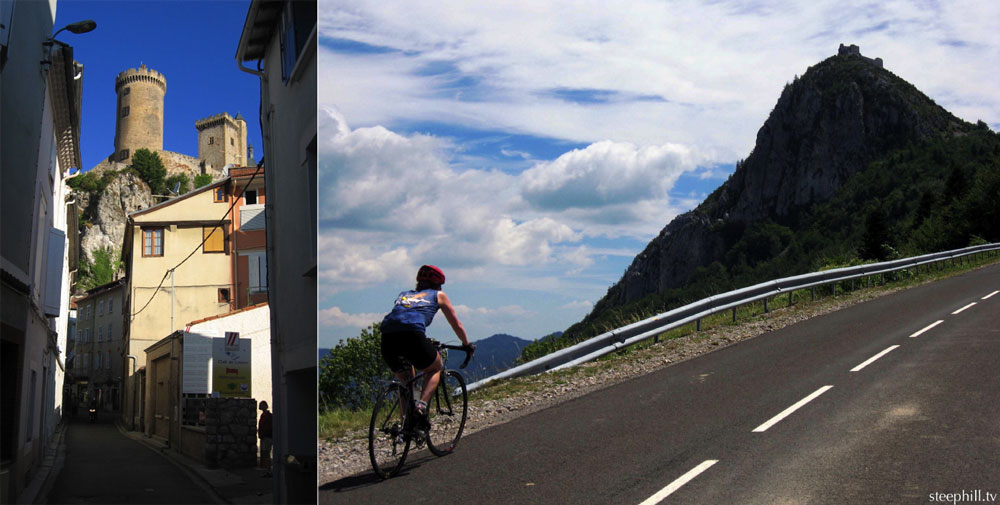
| MONTSEGUR AND THE CATHARS
Who were the Cathars? 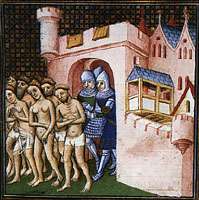 According Peter Wronsiki (2002), The Cathar religion has been both demonized and romanticized. At the peak of their existence in 13th century Europe, primarily in France and Italy, they were characterized as satanic demon worshipers. Today the Cathars are most often portrayed as pacifist vegetarian feminists; medieval New Agers who were ruthlessly put down by a supposedly reactionary and corrupt Catholic Church.
The origin of Cathar beliefs has never been precisely identified, but most historians link them to the dualist Bogomil sect in the Byzantine sphere. Like the Bogomils, Cathars were Christian dualists--a doctrine that has existed in various forms as long as there has been Christianity and before. The dualists attempt to confront the question of how can a God that is all powerful, merciful and good, allow monstrous evil to exist. Their response is that there must be two equally powerful gods--one good and one evil. Unlike Christianity, which demoted Satan beneath God's authority, dualists see the forces of evil and good as equally powerful. |
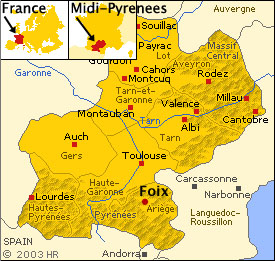
Ask for an opinion on the best cycling location and you'll get many different answers. For me, the Ariege Pyrenees is to cycling what Tibet is to Buddhism. Although the mystical appeal may be different, the effect is the same so the comparison isn't far-fetched. After all, touring cyclists are not so different from monks seeking solitary hours to build inner strength in the mountains... or competitive cyclists building physical strength with a monk-like training regimen. At the center of the Ariege is Foix, the focus of this report.
While based in Toulouse in July of 2006, we took the short train south to Foix on a Friday afternoon. Taking advantage of a late sunset, we were able to get in a 50k warm up/evening ride through the quiet, hilly, one-lane medieval forest roads northwest of Foix before our big Saturday ride.
Foix is a historic town at the center of this idyllic region, which was central command for most of the Pyrenees during the Middle Ages. The rulers known as the "Counts of Foix" were a major influence on the rest of France and even England. The violent Middle Ages sawcountless changes in leadership and after the French Revolution (1789 - 1799), the county of Foix became what is now known as the Department of the Ariege. Because of it's diminished political significance, the Ariege is as sparsely populated today as it was during the Middle Ages. So French history has dealt cyclists the perfect hand. The old, narrow trails built into the landscape of rivers, medium mountains and lush forests are now perfectly maintained one-lane, paved roads. You can cycle through hamlets and past castles admiring the past and the present under heavenly cloud formations that give this region a mystical appeal.
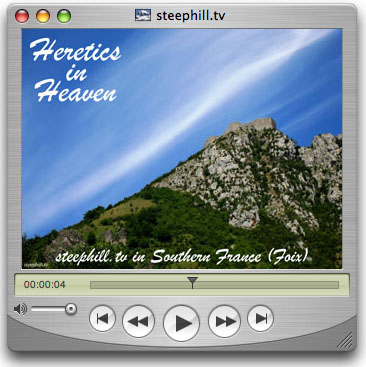
The most impressive clouds we saw were on our ~100 km Saturday loop southeast of Foix, over Montségur, famous for its fort that was the last stronghold of the Cathars. Considered heretics by the Catholic Church for their belief that Jesus and Satan were brothers, Cathars were systematically hunted down throughout Europe in the 13th century. The final two-hundred so-called heretics along with their families, totaling about five-hundred people, were precariously holed-up on the very steep summit of Montsegur for over a year. It took 10,000 troops of the Pope and French monarchy to finally break through. The last Cathars were burned to death since they would not renounce their faith, thus ending the witch hunt. Their peaceful, but strong-willed defiance is now legendary.
Château de Montségur and Château de Roquefixade are two of eleven Cathar Castles. Chateau de Foix is not a Cathar castle but the counts of Foix supported the cause. Our day two ride took us past all three castles and you can walk to the top of all three if you bring along a pair of sandals (and a bike lock). And how was the ride? Other than the return portion through Lavelanet, lots of typically quiet, narrow Ariege roads.
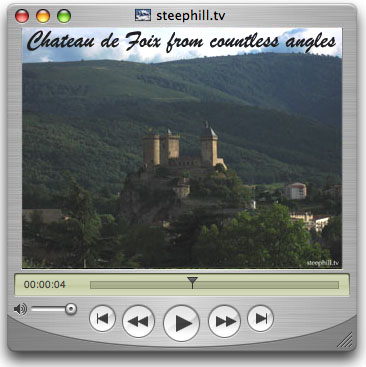
The next day, Sunday morning, we did a challenging "cool down" out and back up to Le Bout de Touron which gains 1100 meters in 16.7k giving it an average grade of 6.4%. At the top, you'll be rewarded with a great panoramic view of the valley below and the peaks in the distance. After returning to our hotel, we showereed, packed up and then walked over to Château de Foix for a guided tour before hopping on the train for the 45 minute ride back to Toulouse. An excellent weekend and I didn't even mention the restaurants, shopping and, on this particular weekend, the nightly, vibrant African music festival.
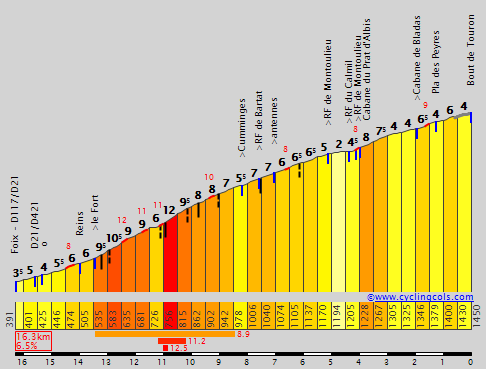
Life isn't perfect in the Ariege and this report only addresses the idyllic surroundings and the superb cycling roads. I'm not aware first hand of the quality of life. I hear the power grid is something of a mystery and the infrastructure of an old city can never be taken for granted. Should you make a visit with the prospect of a high paying tech job in mind, you'll be probably be disappointed although Toulouse, where the new Airbus is made, isn't far away.
Not everyone appreciates the same aspects of a good ride, but we encourage you to be a heretic - get out there and find great rides outside your own province/state or country or language. Combine enough of these rides together and you will build monk-like internal fortitude. — Steve, July 15, 2008
Related: Six more Pyrenees reports | Foix is the stage 11 finishing town for Tour de France 2008
Le Bout de Touron climb profile courtesy of cyclingcols.com


